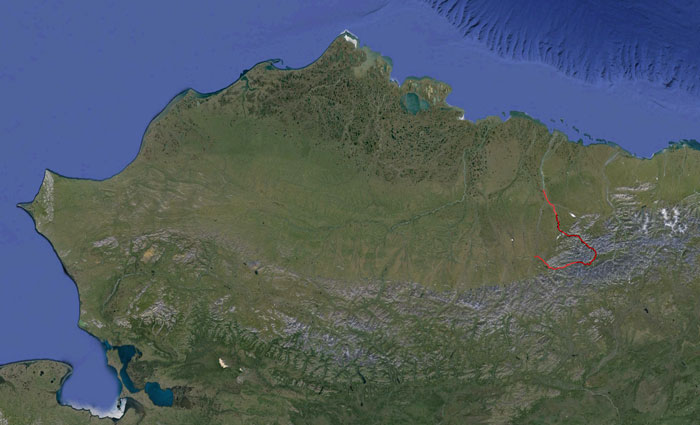To embark on an extensive human-powered journey in Alaska’s Arctic is always a mix of high adventure, survival, and a few tenuous moments. It just seems to shake out that way every time I do it. But every trip has been fantastic, and my most recent journey was no different. For those who may want to do something similar, I don’t want to be a killjoy by sharing information you would like to discover on your own-like route finding and vistas, so read as far as you wish.
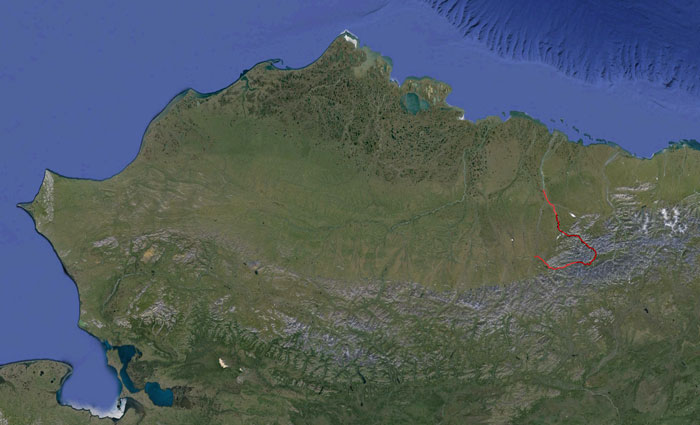
170-mile route location in the Brooks Range, Alaska.
Hiking up the Ribdon River valley and Packrafting down the Ivishak River
There were a few constraints on my trip, mainly time, which resulted in a robust pace and less photography due to that and some inclement weather. While I’ve spent many years trekking in Alaska, I consider myself a beginner in the long hike/packraft trips category, and many out there have perfected their system. I’m in the process of doing that. Over the next few days, I’ll share some information and photos from the area and discuss some gear for such a trip. Here is a quick summary:
- Location: Hike up the Ribdon River, Pack Raft down the Ivishak River to the Sagavanirktok (Sag) River, Brooks Range, Alaska.
- Trip length: 7 Days
- June 14-20
- Backpacking: 57 Miles, 3.5 Days (Osprey 50-liter backpack)
- Pack Rafting: 110 Miles, 3.5 days (Alpaca packraft)
- Pack weight: 51 lbs at the start
- Group: 2 people
One can’t begin a trip of this nature without the process of gear refinement. As the adage says: “If I had more time, I would have written a shorter letter” it takes more time to take less stuff. And you don’t want anything excessive on your back for 60 miles! See my previous post for a near-complete list of the gear I took along with weights.
Out of the box, one has to address: footwear, tent, stove and fuel, pack, raft, drysuit, and food.
Footwear: I deliberated over this considerably but chose the La Sportiva Wildcat trail running shoe, which is lightweight, sturdy, breathable, and has a drainable mesh top. This is critical for walking through countless streams, river crossings, and wet tundra.
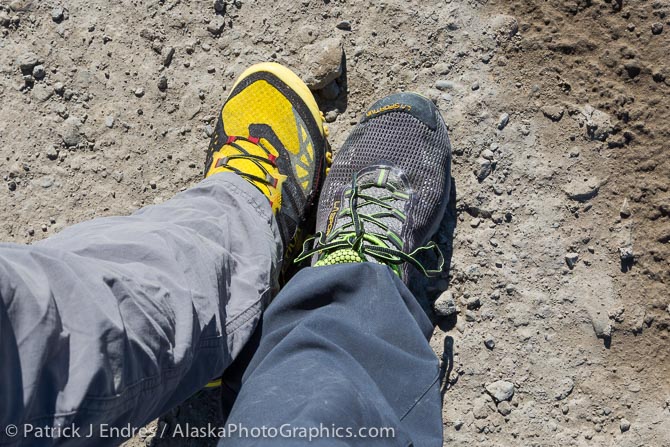
La Sportiva Wildcat trail running shoes survived the trip well. (green ones on the right)
Backpack: I have three Osprey backpacks, and I chose the Atmos 50-liter version because it has been field tested for a good fit and was a little lighter than the 70-liter Aether version. I also like the pocket structure on this pack. It was a tight fit, but it all went in o.k.
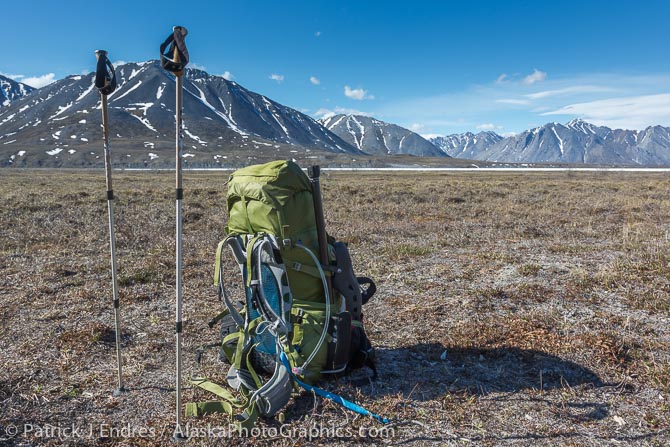
Osprey Atmos 50-liter backpack.
Stove: MSR Reactor Stove with 8oz MSR Fuel canister; it has a built-in windscreen and heats water very fast, although a little heavier than some super light models. I also took my SOTO micro regulator stove and a backup four oz. Canister of fuel, just in case. Since we primarily used Mountain House dehydrated food, making hot water was critical.
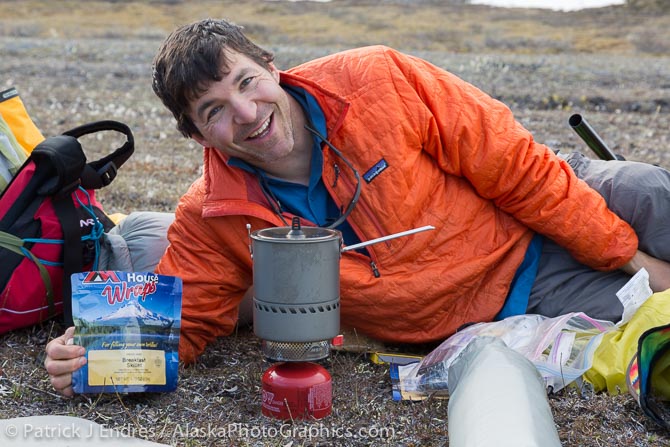
MSR master blaster stove with 8 oz of fuel (lasted the whole trip)
Tent: We used my friend Mark’s Tarptent Squall ultralight shelter, which proved sufficient, although the floor was super slippery. Instead of tent poles, you can use hiking poles to support the front relief. It comes in pretty light at 2.4 lbs.
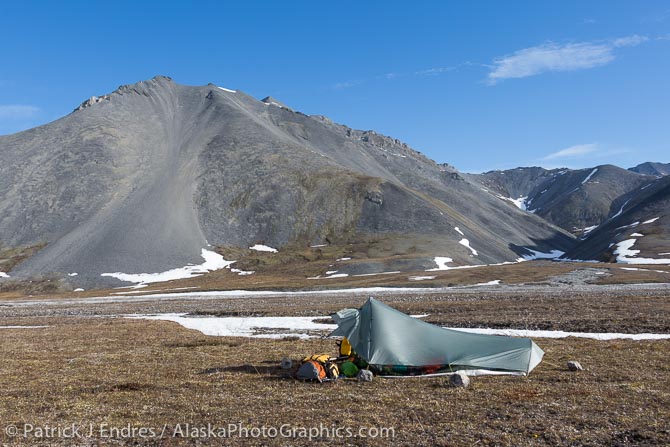
Tarptent Squall
Packrafts: We used the awesome little Packrafts from Alpackaraft. They are light, durable, and very responsive in the water. A paddle breaks down into four pieces, making it easy to carry in a backpack.
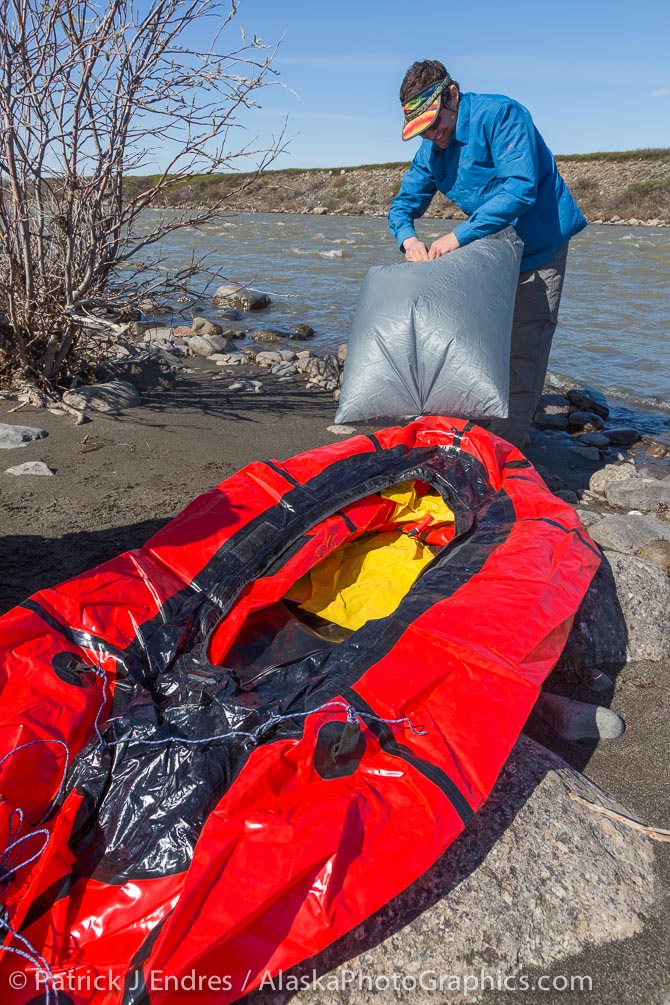
Mark is inflating his snappy red packraft for the first crossing at the start – the Sagavanirktok river.
Water Filter: the Sawyer mini filter proved tremendously versatile and lightweight. It fits in-line in the hydration pack for your backpack, and then I pulled that out and used it directly in the river water whenever I needed a drink.
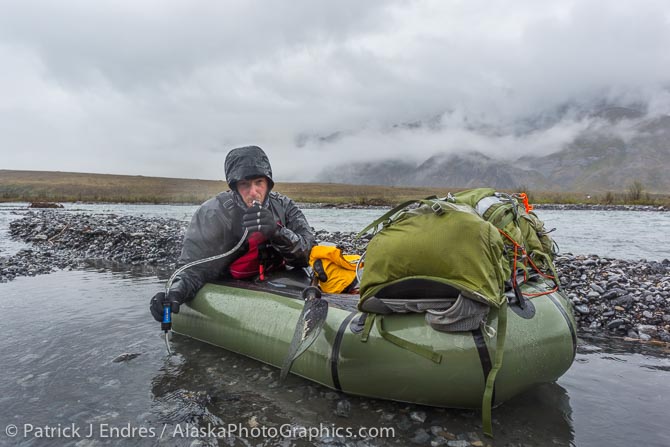
The Sawyer mini water filter worked great for drinking directly from the river.
Drysuits: Staying dry in the Alaska Arctic is critical. The winds are often cold and robust, and a little wetness can make you very cold in such conditions. We had two days of rain while on the river, and the trip was reduced to staying warm, dry, and well-fed enough to fend off the cold. I used a dry top by NRS and dry bottoms by Kokotat. Mark used a stowaway tough, dry suit from Alpackaraft. If I were to make this trip again, I would use the Trekker dry suit from Alpackaraft. It has a built-in hood and the option to add dry booties. My weakness on the trip was cold feet and hands, although the feet were more challenging to keep warm, especially when needing to walk through the frigid water frequently.
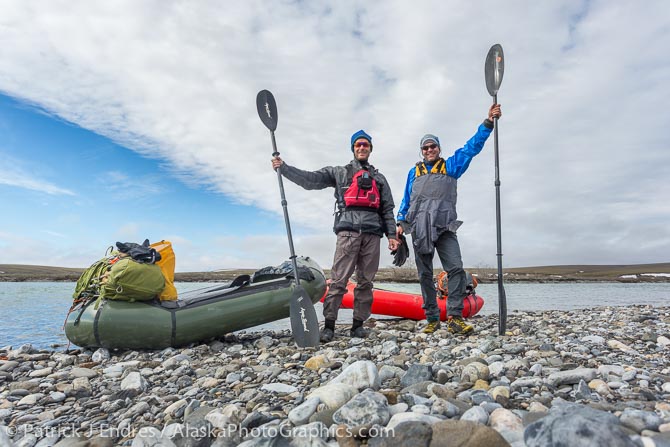
Mark and I suited up and enjoyed a little sun on the last day on the river.
I’ll get to the journey in the next few posts, so stay tuned.

